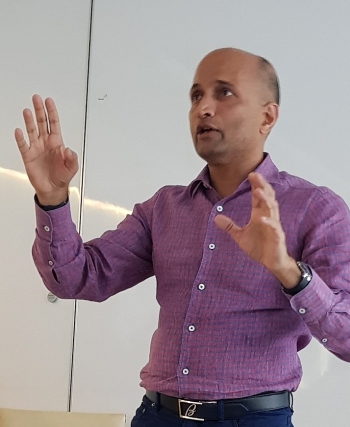Food Empire delivered record profit and revenue in 2019, recovering sharply from the lows of 2015 after the oil crisis broke out in 2014 (see table).
Consider how Food Empire has overcome the devaluation of currencies in its core markets. In Russia, Food Empire's No.1 market, every one USD is worth 65 rubles currently compared to 35+ rubles in 2014. Under such circumstances, you would expect revenue and profits in USD terms would be torpedoed. They were initially -- but while sales in local currency have grown, sales translated into USD terms have held their ground while profitability has soared (see tables below). Why?
|
||||||||||||||||||||||||||||||||||||||||||||||
As CEO Sudeep Nair explained at a FY19 results briefing, when raw material prices go up, when currency devalues, Food Empire raises the selling prices of its products.
|
If currency devalues ... |
|
|
It's done in a measured manner usually, alongside price increases by other players.
Needless to say, competition is tough as there are not just local players but also international brands.
Still, FY2019 group gross margins were healthy at around 40%.
Another case study: In another key market, Ukraine, the currency devalued from 8 hryvnia to a USD before 2015. It has since fallen to 24 hryvnia currently.
Food Empire has raised its selling prices in Ukraine. And, notably, it has achieved record profit there in 2019.
|
Stock price |
67 c |
|
52-week range |
49 - 78 c |
|
PE (ttm) |
10X |
|
Market cap |
S$359 m |
|
Shares outstanding |
534 m |
|
Dividend |
3% |
|
1-yr return |
20% |
|
Source: Yahoo! |
|
An exception has been Myanmar, where the kyat fallen from 1,000 per USD in 2015 to about 1,500 in early 2019.
But, oddly, no coffeemix players there has raised selling prices.
Food Empire, being a relatively minor player without economies of scale, could not take the lead.
Puzzled initially, Food Empire later understood that while every player there loses money, they are part of conglomerates that have other business segments that could absorb the blow.
Deciding that commensurate returns for its investments just would not be forthcoming, Food Empire withdrew from Myanmar last year after losing millions annually (2018: US$4 million).
That exit contributed to a degree to a spike in Food Empire’s net operating cash inflow, which jumped from US$15.1 million in FY2018 to US$39.3 million in FY2019.
With the bleeding stopped in Myanmar, Food Empire's FY2019 results are a benchmark of sorts for how investors can expect it to perform moving forward.
There will continue to be investments to grow core markets such as Russia and, notably, Vietnam (where Food Empire has established a profitable business after initial losses). Interestingly, revenue growth in the core markets -- through existing or new products -- will expand Food Empire's profit margins because fixed overheads typically lag revenue growth. Sudeep reckons that the 9% net margin achieved in FY2019 has scope to turn into double digits in the future. Another catalyst for longer-term growth is its second coffee plant (to produce freeze dried coffee from 2H2020) in India, and its second non-dairy creamer plant in Malaysia that will be completed in 2022. Food Empire has proposed a 1-c final dividend and a 1-c special dividend (2018: 0.68 c total dividend) payable in May 2020. Sudeep holds out the possibility that the 2-c quantum is sustainable in the future -- if the company does not have large M&A or capex requirements. |







